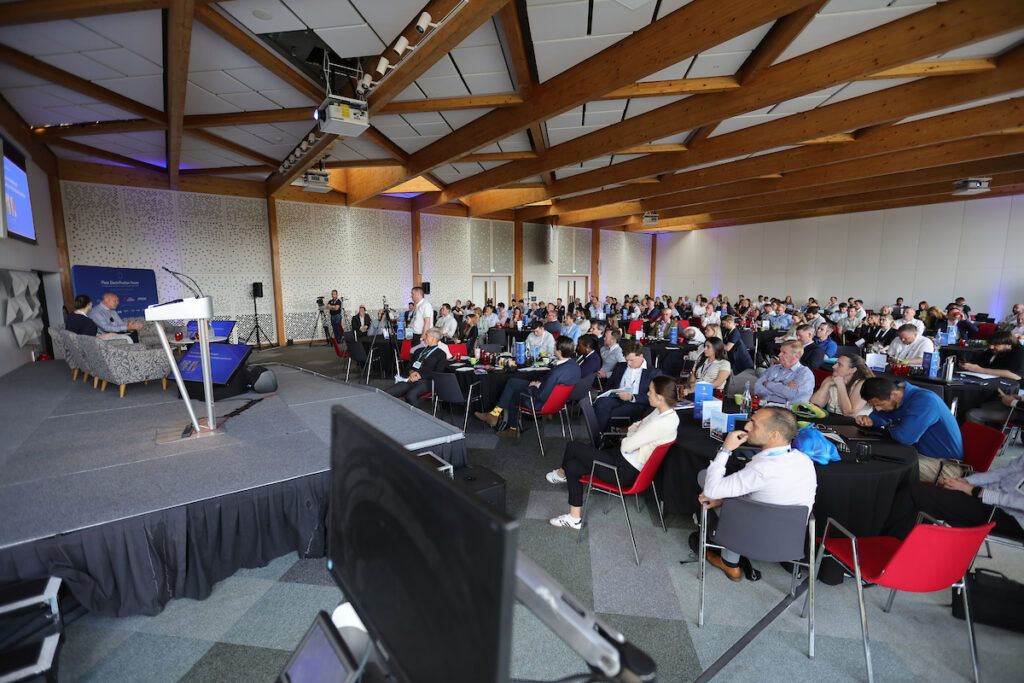For charge point operators and depot managers, one of the biggest hurdles for enabling the transition to electric vehicles (EVs) isn’t the cost of the chargers themselves – it’s securing the necessary power to run them. Marianne Costigan, Head of Private Wire at EDF Renewables UK, looks at why getting connected can be the biggest hurdle.
The UK’s electric vehicle (EV) revolution is in full swing. With the 2035 ban on new petrol and diesel cars looming, and more and more companies investing in electric Heavy-duty Vehicles (eHDVs), the demand for charging infrastructure is skyrocketing.
The current grid infrastructure in many areas simply wasn’t designed for the concentrated power demands of rapid EV charging. And with electricity demand projected to double by 2050 in the UK, the pressure on the existing grid network will continue to intensify.
Adding high-powered chargers can overwhelm local networks, requiring costly upgrades from Distribution Network Operators (DNOs). This lengthy and expensive process creates a significant bottleneck, delaying the rollout of crucial charging infrastructure.
Here’s where private wire networks come to the forefront. Private wire networks allow businesses and communities to directly connect their local electricity needs to the transmission network, bypassing the traditional distribution network infrastructure, and helping to power the growing number of EVs on our road.
Empowering EV uptake with storage and private wire
Transport is the most polluting sector in the UK, and as of 2023, accounting for nearly a third of the country’s overall emissions. This is why the electrification of transport is vital to reducing emissions.
The electrification of Heavy-duty Vehicles (HDVs) is a crucial part of this and will only accelerate, if the necessary investment is made in future-proofing grid infrastructure, as more and more companies look to make their operations more sustainable.
However, according to the Global EV Outlook published recently by the IEA, electric vehicles could account for 6-8% of total electricity demand by 2035, meaning we need to deploy solutions today to avoid grid constraints.
Private wire connections can play a crucial role in decarbonising the UK’s energy system. By directly connecting nearby consumers, such as an EV charging hub, through dedicated transmission lines, private wire eliminates the need for energy to be transported over long distances, reducing energy losses and grid congestion. This localised approach to energy distribution maximises efficiency and minimises environmental impact.
Widespread EV adoption requires an adaptable and flexible grid that can power cars as and when required. One way of ensuring the grid can remain balanced, is through the deployment of utility scale battery energy storage systems. Batteries mitigate the impact of spikes in demand and with the pipeline of battery projects growing by two-thirds in capacity over the last year, the technology is playing a critical role in providing the flexibility and stability in power systems required as variable sources of renewables scale, and the demand for electricity continues to boom.
Energy Superhub Oxford: a model of success
One model that is providing a blueprint for cities around the world to scale up green transport and power, without causing additional strain to the grid, is Energy Superhub Oxford (ESO).
ESO is the first example of a model spearheaded by EDF-Renewables UK, with one of Europe’s most powerful EV charging networks combined with the UK’s first transmission-connected battery.
The site has become a key piece of the puzzle in scaling up green transport and power in Oxford, with the infrastructure allowing companies like Oxford Bus Company to bring a brand-new fleet of 104 electric buses to the city.
ESO has proven a successful model in equipping the grid to manage demand and supply as well as enabling mass electrification of transportation. In fact, since the Superhub’s opening, Oxford has seen some of the highest EV uptake figures with half of newly registered vehicles in the region being electric last year. This indicates that, with ESO providing consumers with the option of clean energy infrastructure on their doorstep, citizens in the region are making greener choices.

We need greater scale and pace to deliver change
The clean energy revolution is on an upward trajectory. At EDF Renewables, we are developing high-capacity connection points across England and Wales to enable the development of charging infrastructure in areas where there is demand. In doing so, we are aiming to incentivise investment in renewable energy sources to meet the increased demand.
But we cannot do this alone. We need to see greater ambition from local and national government to make the most of available connections and scale these critical technologies in order to reach net zero goals by 2050.
Images courtesy of EDF Renewables UK








